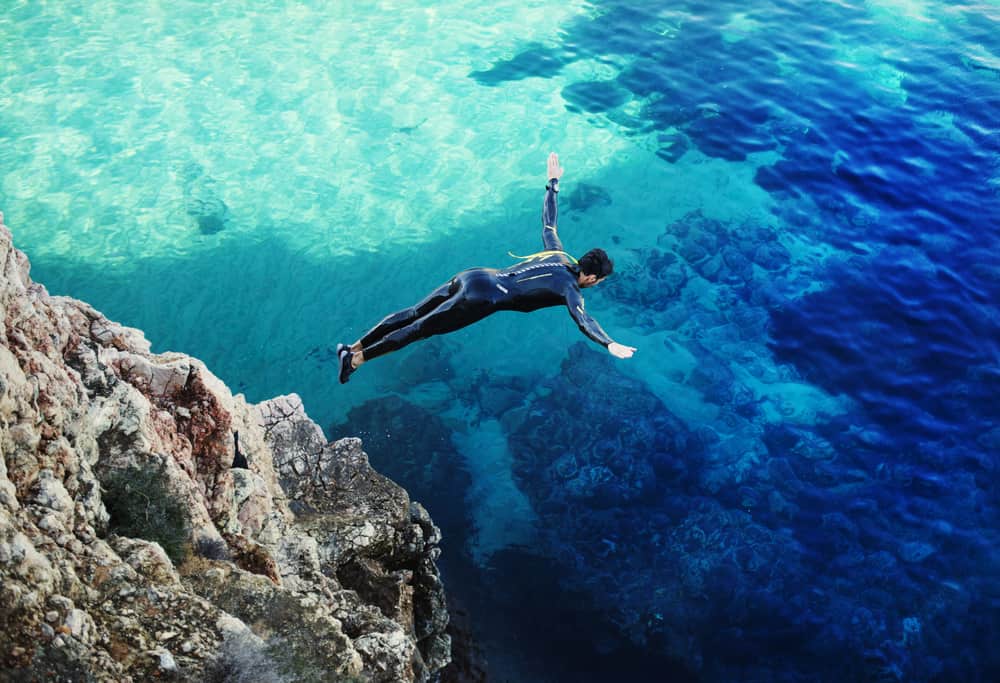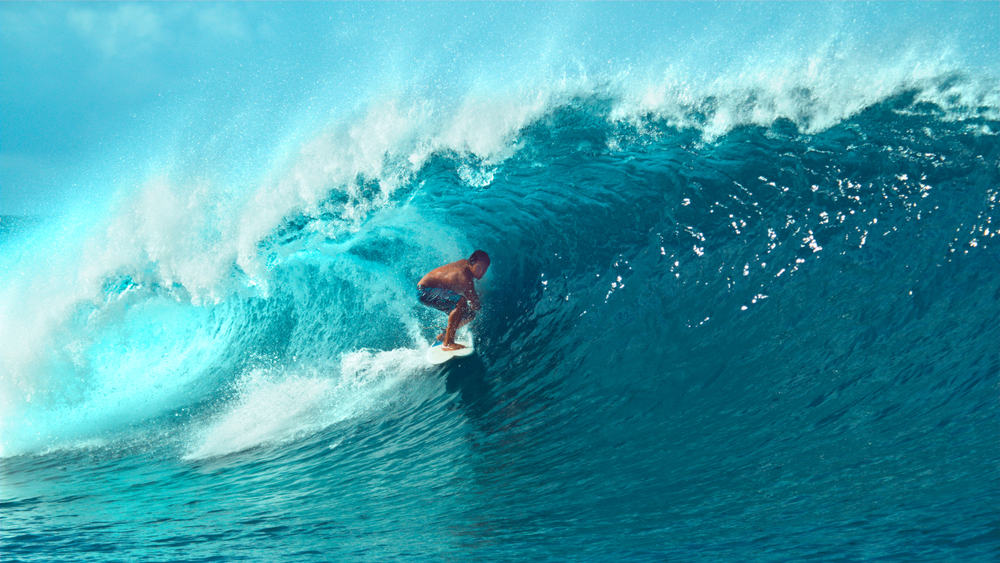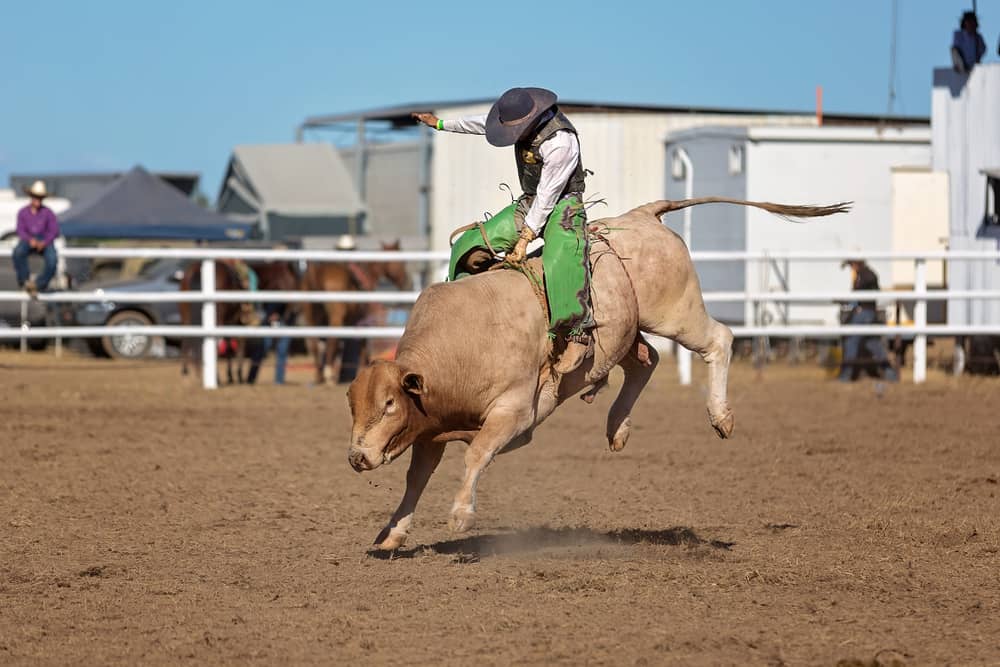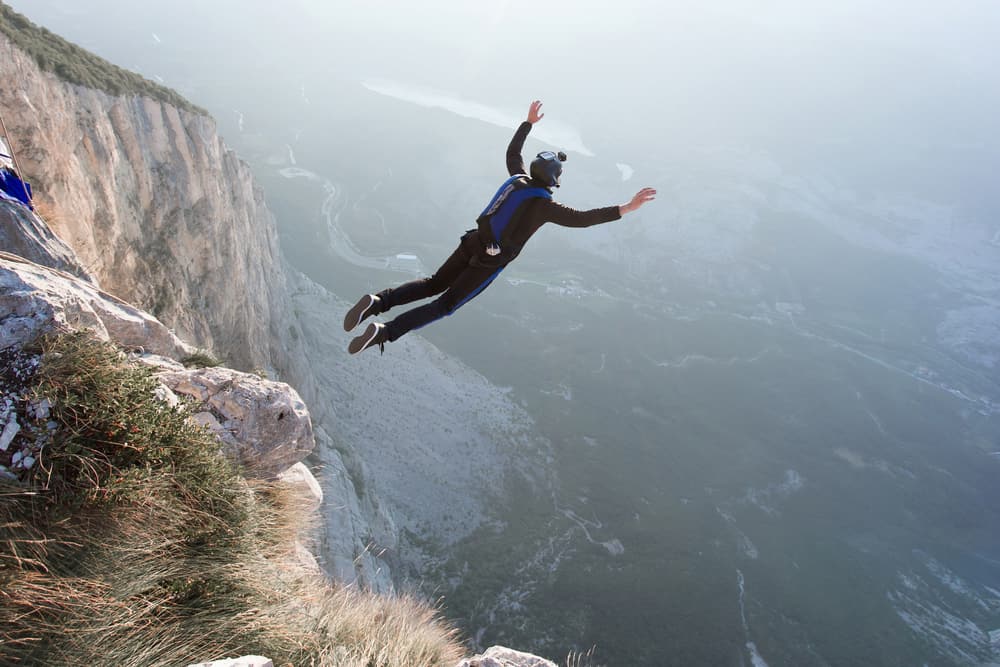News
The 20 Most Dangerous Sports in the World

What are the most dangerous sports in the world?
Millions of people participate in organized sports every year, including those who opt for more dangerous, adrenaline-pumping activities that carry the risk of serious injuries or even death.
Let’s take a look at the most dangerous sports around the globe.
The Most Dangerous Sports in the World
Even though dangerous sports come with many risks, seasoned competitors take on the challenge, recognizing how to stay safe while participating in sport.
Here’s our list of the 20 most dangerous sports in the world:
20. Scuba Diving
Scuba diving is a dangerous sport as it takes people deep underwater to explore the ocean, an unpredictable environment to begin with.
Of course, there are risks beneath the surface, such as sharks, jellyfish, and stingrays, but an even more significant concern for scuba divers is making sure they don’t run out of oxygen.
After all, each year, scuba diving claims the lives of around 100 North American divers and another 100 from the rest of the world.
To avoid disabling injuries, scuba divers are encouraged to dive in pairs rather than going solo.
19. Skiing/Snowboarding
Skiing and snowboarding are popular winter sports, but they are also dangerous, given they involve people racing down snowy hills standing up.
There’s the potential for falling, whether it be losing your grip on the chair lift or going over the edge of a hill.
Fast weaving and hard landings are also risky for skiers and snowboarders, who may not realize there is something in their way until it’s too late.
Skiers are prone to knee and shoulder injuries, while snowboarders are more at risk of hurting their heads or fracturing their wrists.
18. Cliff Diving
As the name suggests, cliff diving is when you jump off a cliff into the water below, usually an ocean or sometimes a deep lake or river.
Done both recreationally and competitively, cliff diving combines the adrenaline of free-falling with the risks of diving into the unknown.
Sometimes cliff divers don’t see obstructions in the water below, or they may lose consciousness and drown.
Even with successful cliff dives, the risk of ruptured eardrums, injured discs, and compression fractures remains high.
17. Cheerleading
Cheerleading began in the U.S. as a school spirit sport in the late 19th century, and organized cheerleading has grown in popularity over the last 100 years.
Today, thousands of cheerleaders take part in high-flying tumbles and stunts, which creates the potential for dangerous falls.
Injuries to the fingers and hands are common, as well as ankle sprains, ligament tears, and lower back strains.
If a cheerleading stunt is not executed correctly, a cheerleader could fall from up to 10 ft., leading to broken bones or, in severe cases, traumatic brain injuries and paralysis.
16. Motor Racing
Motor auto racing dates back to the late 1800s, although the sport exploded in popularity by the mid-20th century.
Competitive car racing may be exciting to watch, but the drivers are always at risk as vehicles may reach speeds over 220 MPH depending on the competition.
Even amateur car racing is dangerous, with 100-175MPH speeds creating serious concerns, as a flipped car or fiery crash can trap drivers in an instant.
Fractures, traumatic head injuries, and burns are just a few of the possible injuries from motor racing gone wrong, with more than 500 U.S. drivers losing their lives in race collisions over the past 25 years.
15. American Football
American football is one of the most popular sports in the U.S., as showcased by the National Football League (NFL), generating billions of dollars in revenue each year.
While gridiron football is popular both professionally and at lower levels, particularly for middle and high schoolers, safety concerns are on the rise.
This collision sport can lead to all sorts of muscle strains and sprains, broken bones, torn ligaments, concussions, and other injuries.
Chronic traumatic encephalopathy (CTE) is also linked to American football, as repeated concussions and brain blows may lead to this degenerative brain disease.
14. Freediving
Freediving is a dangerous underwater activity where divers hold their breath until resurfacing instead of using scuba gear to breathe.
Without breathing apparatus, freediving is highly dangerous because people can lose consciousness.
Shallow water blackout has claimed the lives of free divers before, as the pressure on the lungs can be too much during both the descent and the ascent.
There are environmental hazards, too, mainly marine predators like sharks that may attack free divers in the open water, although shark attacks are still very rare overall.
13. Horse Riding
Horseback riding has been part of human civilization for many centuries, and while the wild west cowboys have died out, millions of people still ride horses for fun or competition.
Protective gear like helmets and padding is so important when horseback riding, as the sport can cause muscle sprains and strains, especially if a rider tries to break their fall.
In serious falls, horseback riders may suffer life-threatening pelvis, spine, or head injuries.
Up to 30% of horse-related injuries are traumatic brain injuries or other blows to the head.
12. Rugby
Since rugby originated in England in the early 1800s, the sport has evolved and expanded with several variations played worldwide.
Despite its popularity, rugby is far from an injury-free sport, with 1-in-4 rugby players injured at some point during their season.
As a collision sport, rugby is often responsible for fractured fingers, broken bones, strained tendons, and deep bruises.
Common rugby injuries include dislocated shoulders, slipped discs, and concussions, which are often caused by the intense tackles rugby is known for.
11. Downhill Mountain Biking
Downhill freeride mountain biking may be exhilarating, but that rush isn’t always worth it, considering it’s one of the most dangerous sports out there.
This type of extreme mountain biking is reserved for rough terrain and steep elevations with rocks, trees, and other obstacles.
12-meter jumps and 3-meter drops are signature features of downhill mountain biking, making it extremely dangerous compared to traditional biking.
Even with a helmet and protective clothing, losing control of a bike on a mountain course may cause common injuries like muscle sprains and broken collarbones.
10. Lugeing
Lugeing is another one of the world’s most dangerous sports as riders lay on their backs in a small sled, racing down a heartstopping track and requiring serious control to prevent crashes.
A standard luge course drops 30 stories in one minute, so the elevation is intense, and the supine position makes it even more dangerous.
Lugeing has been around since the 1870s and was added to the Winter Olympics in 1964, and while it’s especially popular in colder European climates like Norway and Germany, collisions are extremely concerning.
There have been several fatal luge crashes at the Olympics and World Championships, most recently in 2010, when a Georgian luge athlete crashed during a training run at the 2010 Winter Olympics in Vancouver.
9. Cave Diving
Cave diving is a scary yet exhilarating experience for people brave enough to go deep beneath the ocean’s surface to explore water-filled caves.
Done as both scientific exploration and an extreme sport, cave diving requires a proper breathing apparatus and protective wetsuit.
Only someone with extensive underwater diving knowledge can cave dive, as divers aren’t able to swim up to the surface.
Instead, once inside an underwater cave, divers must swim back to the entrance to resurface, so there is the risk of getting lost and losing air supply.
Cave divers who don’t make it back to the surface typically lose consciousness underwater, so that’s a legitimate concern for anyone wishing to explore underwater caves.
8. MMA
MMA or mixed martial arts is a dangerous combat sport involving full contact with grappling, striking, and ground fighting techniques.
It combines elements from Muay Thai, boxing, wrestling, karate, judo, and jujitsu to create an entertaining yet dangerous sport practiced around the world.
Even seasoned competitors take a risk when stepping into the ring for an MMA fight, as there is a real possibility of mild sprains, concussions, and other painful injuries.
Bloodied, broken noses are not uncommon at MMA fights, and one wrong move can cause even worse outcomes for these fighters.
7. Helicopter Skiing
Helicopter skiing isn’t for the faint of heart, as it’s a dangerous race down remote terrain for downhill skiing or snowboarding.
While traditional downhill skiing is a relatively safe and popular winter sport with hills accessible via ski lift, heli-skiing uses helicopters to reach backcountry slopes.
Sure, the views are incredible, and there’s less congestion on the hills when helicopter skiing, but the risks are higher for wrist fractures, ankle sprains, or even something more serious like a brain injury.
That’s because there aren’t emergency services available off the beaten track, so in the event of an accident, the group is on its own.
Also, helicopter skiing takes skiers to untamed paths, and there’s a greater possibility of hidden obstructions like rocks or trees.
6. Big Wave Surfing
Big wave surfing is a real sport with dangerous consequences, as the ocean and its predators are highly unpredictable.
This surfing discipline requires advanced surfers to surf waves at least 20 feet high and often much larger.
The pummeling power of these huge waves can push surfers as far down as 50 feet, and then they need to regain equilibrium and resurface before the next wave comes, which could be in as little as 20 seconds.
Ruptured eardrums are the least of a big wave surfer’s worries, as strong current can slam them to the ocean floor and cause severe and even deadly injuries.
5. Boxing
As one of the oldest and most respected martial arts, boxing is popular with millions of people across every continent.
Whether it’s amateur boxing as a hobby or professional boxing, where competitors earn millions, it remains true that one wrong move could send someone to the hospital or worse.
While most modern competitions of this combat sport involve protective gloves and mouth guards, even the world’s best boxers like Mike Tyson can be taken down by a punch that lands the wrong way.
Boxers throw punches at one another for a set time, and although two highly skilled fighters know how to defend themselves, there’s the potential for catastrophic injuries as an estimated 2,000 boxers have died in the ring over the last 120 years.
With many unsanctioned boxing matches in different countries, the true toll of boxing injuries may actually be much higher.
4. Mountaineering
Mountaineering or mountain climbing is a highly dangerous sport that combines extreme elevation with harsh elements.
Sometimes considered a survival sport, mountaineering is based on centuries of climbing tall mountains, and while all the ropes and safety gear of modern rock climbing help, it’s still highly dangerous.
Outdoor climbing, bouldering, and skiing all fall under the realm of mountaineering, and as climbers reach new alpine heights, they are likely to encounter heavy wind, rain, fog, snow, and ice.
While the elements depend on their location, most mountaineers know how quickly the weather can change and how this has a huge impact on their climbs.
It’s not uncommon for mountaineers to slip and fall or become exposed to the elements, with many mountaineering tragedies of the early 1900s resulting from such injuries.
Mountaineering protective measures are better now than they were then, but there’s always the risk of a misplaced step or a snapped rope causing serious injuries or worse.
3. Free Solo Rock Climbing
The very nature of free solo rock climbing puts it near the top of the list for broken bones and fatal injuries.
Normal rock climbing is hard enough, but solo climbing takes the danger to new heights as climbers don’t use any harnesses, ropes, or protective gear.
This is a highly technical activity that only the most advanced climbers should attempt, as they must use their skill and strength to anticipate each movement.
As you can imagine, free rock climbing on your own really isn’t a good idea, whether it’s your first climbing attempt or you’ve been scaling boulders for years.
With no safety gear, one wrong move means a freefall onto the rough terrain below.
Falls are usually fatal, and even those who survive are at high risk of serious fractions, paralysis, brain damage, and other common injuries.
2. Bull Riding
Bull riding is similar to horseback riding in terms of the inherent dangers, as climbing on the back of any animal is unpredictable, especially untamed bulls that are riled up in a big arena.
This rodeo sport sees riders hanging on for dear life atop a bucking bull. Even the most experienced bull riders may be seriously injured when they are bucked off rodeo bulls, which can weigh up to 2,000 lb.
Just the efforts to stay mounted on the bull are enough to jar the neck or irritate old injuries, and then there’s the possibility of major injuries to the head, shoulders, and knees.
In fact, data from professional rodeo shows that 36% of all bull riding injuries were severe, with fractures, concussions, and facial injuries causing serious health concerns.
While bull riding has been around since the 1500s, it has garnered negative attention in recent decades, not just as an extreme sport with numerous injuries, but also as an animal rights cause with activists not fond of the way bulls are treated in rodeo sport.
1. BASE Jumping
Out of all the sports in the world, BASE jumping is the most dangerous, with a five-to eightfold greater risk of serious injury or death compared to the similar sport of skydiving.
This dangerous sport involves jumping from tall buildings, antennas, spans, or earth features such as mountains or gorges.
While a parachute is used during the descent, this thrill-seeking sport requires incredibly precise calculations to jump and land safely.
Cliff jumping is particularly dangerous as BASE jumpers may inadvertently hit large boulders as they descend into mountainous terrain.
Unfortunately, serious BASE jumping injuries are difficult to survive, especially since most jumpers head to awe-inspiring landmarks in remote locations, which are more difficult for emergency responders to access.
BASE jumping, which began in earnest with the first wingsuit BASE jump in 1989, has a 1 in 2,300 chance of dying during a jump.
Summary
Extreme sports offer an amazing adrenaline rush, but there are inherent risks involved, as with any contact sport.
If you decide to try one of the most dangerous sports in the world, just be aware of the risk of neck and head injuries and take safety precautions to ensure you have a safe and successful sporting experience.
Here’s a quick recap of the 20 most dangerous sports in the world:
- BASE Jumping
- Bull Riding
- Free Solo Rock Climbing
- Mountaineering
- Boxing
- Big Wave Surfing
- Helicopter skiing
- MMA
- Cave Diving
- Lugeing
- Downhill Mountain Biking
- Rugby
- Horse Riding
- Free Diving
- American Football
- Motor Racing
- Cheerleading
- Cliff Diving
- Skiing/Snowboarding
- Scuba Diving




















